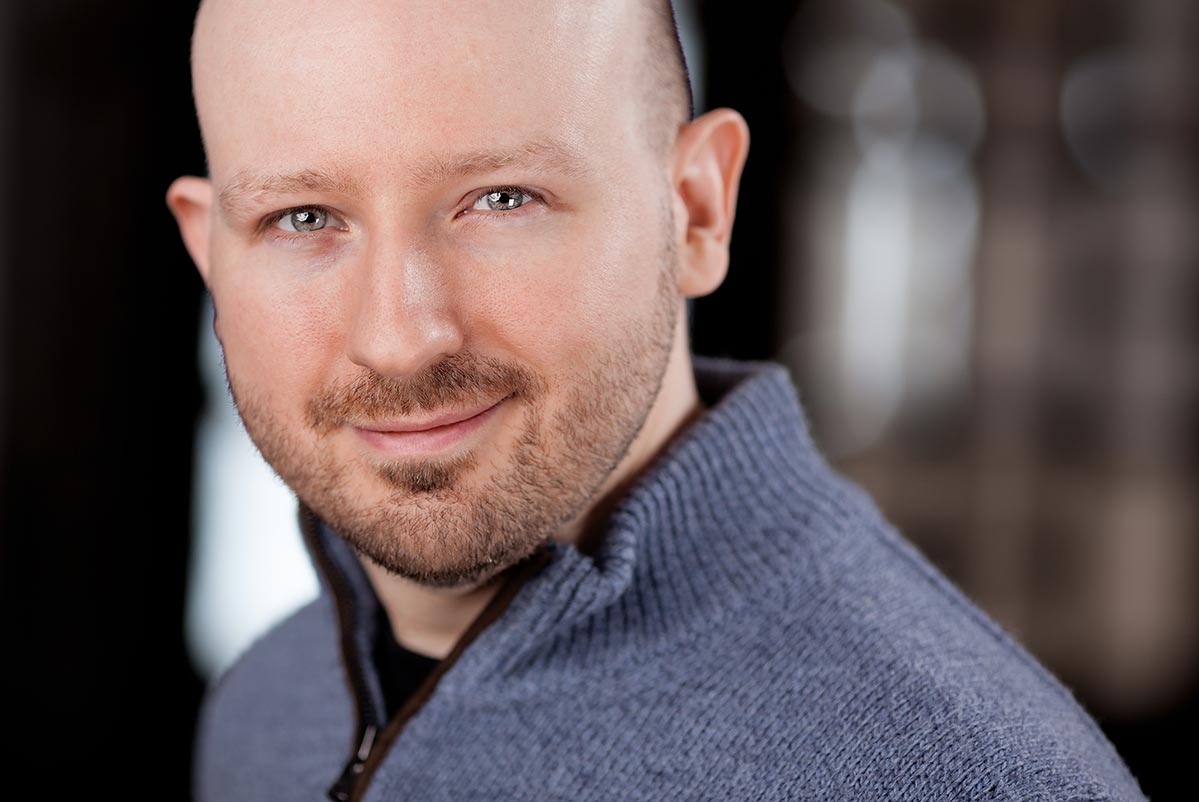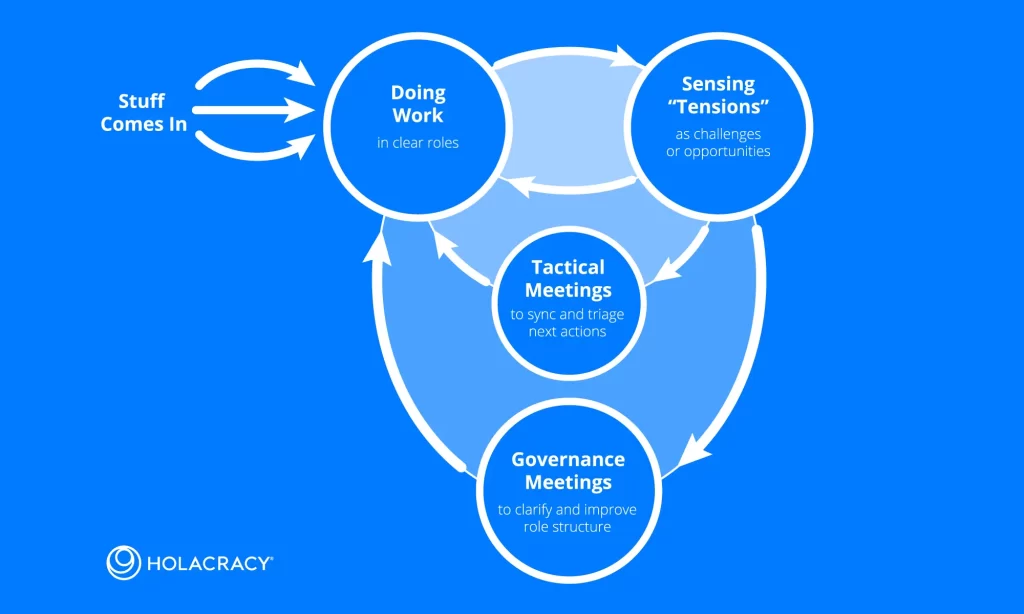Typically, power and authority in an organization formally rest with the guy at the top — the CEO, managing director, or whatever label is used. Theoretically power is delegated from there, however this process is often extremely fuzzy. More often, most people in the organization have little clarity about who has what authority to make which decisions, at least for many topics. And when decision-making authority is unclear, we see behaviors that make sense given that context but waste time and energy: steam-rolling over others, painfully-slow consensus-seeking, playing politics, etc. — there’s no good answer.
When people are first exposed to the Holacracy system, they’re often wowed by its smooth, efficient, transpersonal meetings, and sometimes think of the method as “really cool meeting processes”. Holacracy meetings may be quite remarkable, however this conception of the method misses the bulk of its shift: the transformation to a new power structure, which clarifies and distributes authority throughout the organization, by regularly processing tensions sensed by all within. Once we have that, the frustrating responses to lack of clear authority can give way to generating and harnessing organizational clarity.
Governance Meetings
This is what Holacracy Governance Meetings are all about — they are not just nice ways to run a meeting. They have tangible rules with clear outputs that distribute authority throughout a company. Said another way, no longer does the power to define who has what authority rest with the guy at the top; the seat of power has shifted from the leader, to a defined governance process. Its outputs rule supreme. Like a constitutionally-empowered congress defining laws not even a president can trump, so too does the Holacracy Constitution define the seat of authority for the organization as resting in a legislative process, not an autocratic ruler.
This leads to a shift both powerful and challenging for all involved. One of the more interesting parts of my job when I work with an organization is to oft-remind the CEO who adopted Holacracy that “you no longer have the authority to make that decision”. And, on the flip side, to remind others that “the governance process has granted you the accountability and authority to make that decision; it’s yours to own, and it’s not the boss’s job to tell you what to do”. As one boss recently said in response, “Thank God — now I can stop making all the decisions around here!”
I offer these reminders continuously to drive home the point: using the Holacracy system isn’t just about meeting differently, it’s about distributing real authority through a governance process that now holds the core power to define authority in the organization. Of course, someone still has the authority to replace folks if they’re not using their authority wisely — but short of that, the authority granted in governance is not to be overruled by an over-involved boss.
Clearly distributed authority allows faster decisions and more collaboration
Once this shift is fully embodied, I’ve noticed an interesting result: it liberates those within the organization to be both more autocratic and simultaneously more collaborative. With authority clear and distributed, no one has to tiptoe around an issue and build buy-in, which liberates autocratic action with confidence, knowing that an integrative legislative process has granted such authority. And at the same time, someone with clear autocratic authority is freed to ask for help, input, and dialog, and others are free to give it and pitch their opinions — without any risk of the process devolving to a consensus-deadlock or an autocratic decree from a conventional leader. As soon as the authority-holder gets enough input to confidently make a decision, they can comfortably cut off the dialog, thank those involved, and make their decision.

